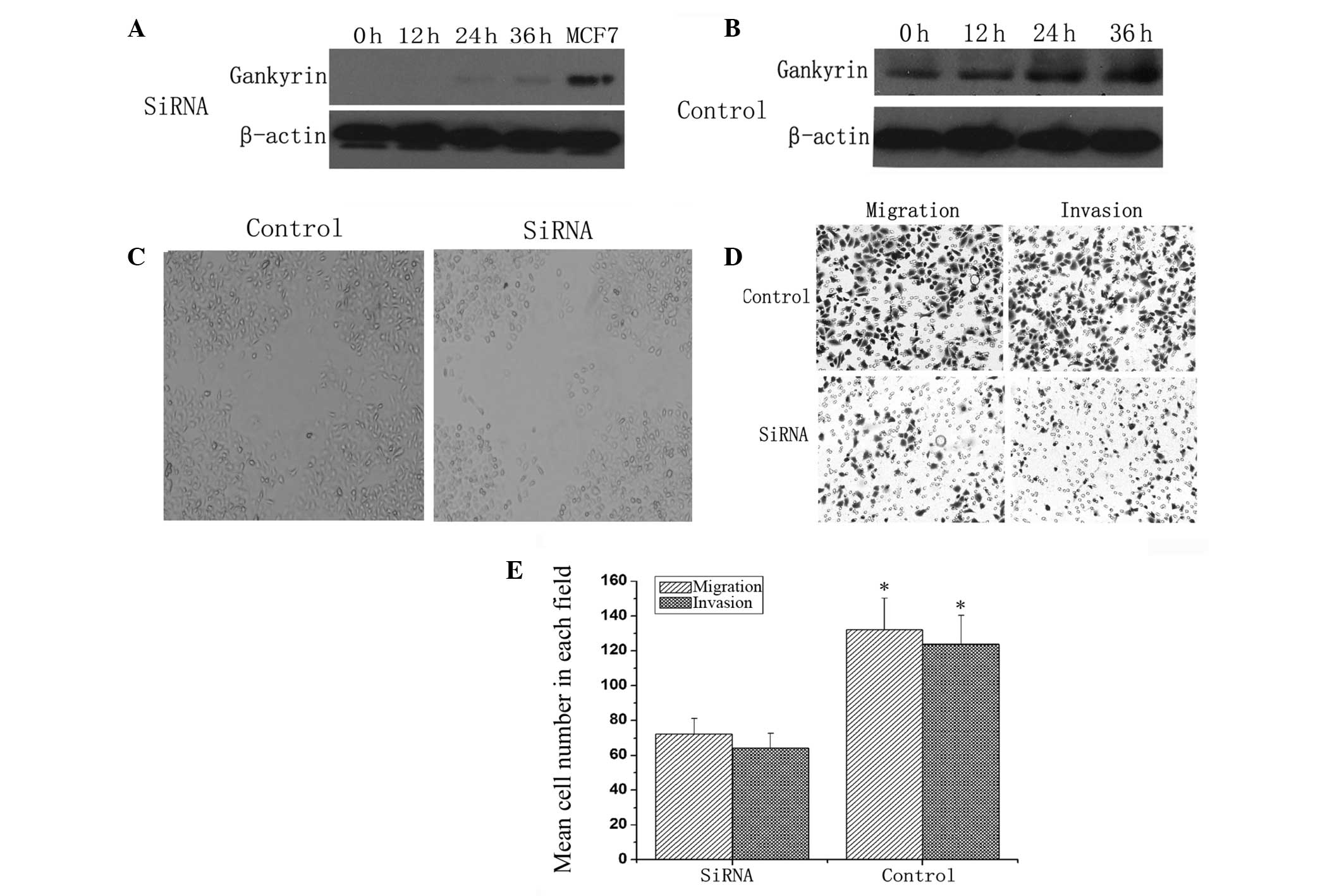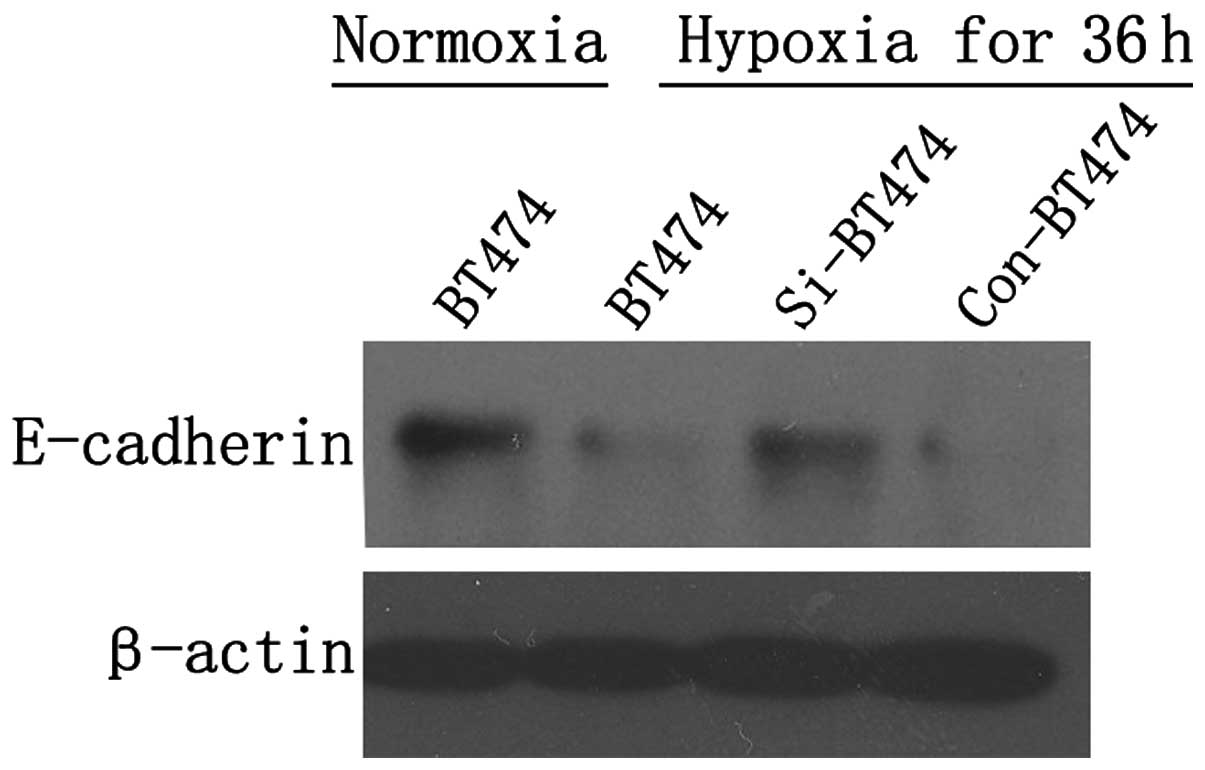|
1
|
Jemal A, Bray F, Center MM, Ferlay J, Ward
E and Forman D: Global cancer statistics. CA Cancer J Clin.
61:69–90. 2011. View Article : Google Scholar
|
|
2
|
Onozuka HK, Tsuchihara K and Esumi H:
Hypoglycemic/hypoxic condition in vitro mimicking the tumor
microenvironment markedly reduced the efficacy of anticancer drugs.
Cancer Sci. 102:975–982. 2011.PubMed/NCBI
|
|
3
|
Louie E, Nik S, Chen JS, et al:
Identification of a stem-like cell population by exposing
metastatic breast cancer cell lines to repetitive cycles of hypoxia
and reoxygenation. Breast Cancer Res. 12:R942010. View Article : Google Scholar : PubMed/NCBI
|
|
4
|
Pouysségur J, Dayan F and Mazure NM:
Hypoxia signalling in cancer and approaches to enforce tumour
regression. Nature. 441:437–443. 2006.PubMed/NCBI
|
|
5
|
Harris AL: Hypoxia - a key regulatory
factor in tumour growth. Nat Rev Cancer. 2:38–47. 2002. View Article : Google Scholar : PubMed/NCBI
|
|
6
|
Krzywda S, Brzozowski AM, Higashitsuji H,
et al: The crystal structure of gankyrin, an oncoprotein found in
complexes with cyclin-dependent kinase 4, a 19 S proteasomal ATPase
regulator, and the tumor suppressors Rb and p53. J Biol Chem.
279:1541–1545. 2004. View Article : Google Scholar : PubMed/NCBI
|
|
7
|
Lozano G and Zambetti GP: Gankyrin: an
intriguing name for a novel regulator of p53 and RB. Cancer Cell.
8:3–4. 2005. View Article : Google Scholar : PubMed/NCBI
|
|
8
|
Higashitsuji H, Higashitsuji H, Itoh K, et
al: The oncoprotein gankyrin binds to MDM2/HDM2, enhancing
ubiquitylation and degradation of p53. Cancer Cell. 8:75–87. 2005.
View Article : Google Scholar : PubMed/NCBI
|
|
9
|
Fu XY, Wang HY, Tan L, Liu SQ, Cao HF and
Wu MC: Overexpression of p28/gankyrin in human hepatocellular
carcinoma and its clinical significance. World J Gastroenterol.
8:638–643. 2002.PubMed/NCBI
|
|
10
|
Ortiz CM, Ito T, Tanaka E, et al: Gankyrin
oncoprotein overexpression as a critical factor for tumor growth in
human esophageal squamous cell carcinoma and its clinical
significance. Int J Cancer. 122:325–332. 2008. View Article : Google Scholar
|
|
11
|
Tang S, Yang G, Meng Y, et al:
Overexpression of a novel gene gankyrin correlates with the
malignant phenotype of colorectal cancer. Cancer Biol Ther.
9:88–95. 2010. View Article : Google Scholar : PubMed/NCBI
|
|
12
|
Meng Y, He L, Guo X, et al: Gankyrin
promotes the proliferation of human pancreatic cancer. Cancer Lett.
297:9–17. 2010. View Article : Google Scholar : PubMed/NCBI
|
|
13
|
Li J, Knobloch TJ, Kresty LA, et al:
Gankyrin, a biomarker for epithelial carcinogenesis, is
overexpressed in human oral cancer. Anticancer Res. 31:2683–2692.
2011.PubMed/NCBI
|
|
14
|
Kim YH, Kim JH, Choi YW, et al: Gankyrin
is frequently overexpressed in breast cancer and is associated with
ErbB2 expression. Exp Mol Pathol. 94:360–365. 2012. View Article : Google Scholar : PubMed/NCBI
|
|
15
|
Zhen C, Chen L, Zhao Q, et al: Gankyrin
promotes breast cancer cell metastasis by regulating Rac1 activity.
Oncogene. 32:3452–3460. 2013. View Article : Google Scholar : PubMed/NCBI
|
|
16
|
Liu Y, Higashitsuji H, Higashitsuji H, et
al: Overexpression of gankyrin in mouse hepatocytes induces
hemangioma by suppressing factor inhibiting hypoxia-inducible
factor-1 (FIH-1) and activating hypoxia-inducible factor-1. Biochem
Biophys Res Commun. 432:22–27. 2013. View Article : Google Scholar : PubMed/NCBI
|
|
17
|
Liu N, Zhang G, Bi F, et al: RhoC is
essential for the metastasis of gastric cancer. J Mol Med (Berl).
85:1149–1156. 2007. View Article : Google Scholar : PubMed/NCBI
|
|
18
|
Yang G, Tang SQ, Huang DS, Wang JW, Liu Y
and Wang JY: Aplastic anemia transformed into acute myeloblastic
leukemia M1 8 years later: a case report. Zhonghua Er Ke Za Zhi.
43:2212005.(In Chinese).
|
|
19
|
Fu J, Chen Y, Cao J, et al: p28GANK
overexpression accelerates hepatocellular carcinoma invasiveness
and metastasis via phosphoinositol 3-kinase/AKT/hypoxia-inducible
factor-1alpha pathways. Hepatology. 53:181–192. 2011. View Article : Google Scholar
|
|
20
|
Chen J, Imanaka N, Chen J and Griffin JD:
Hypoxia potentiates Notch signaling in breast cancer leading to
decreased E-cadherin expression and increased cell migration and
invasion. Br J Cancer. 102:351–360. 2010. View Article : Google Scholar : PubMed/NCBI
|
|
21
|
Zhu J, Sun L, Lin S, et al: BlyS is
up-regulated by hypoxia and promotes migration of human breast
cancer cells. J Exp Clin Cancer Res. 31:312012. View Article : Google Scholar : PubMed/NCBI
|
|
22
|
Dong LW, Yang GZ, Pan YF, et al: The
oncoprotein p28GANK establishes a positive feedback loop in
beta-catenin signaling. Cell Res. 21:1248–1261. 2011. View Article : Google Scholar : PubMed/NCBI
|














